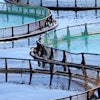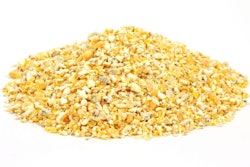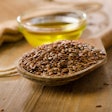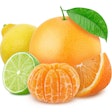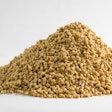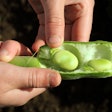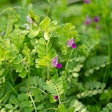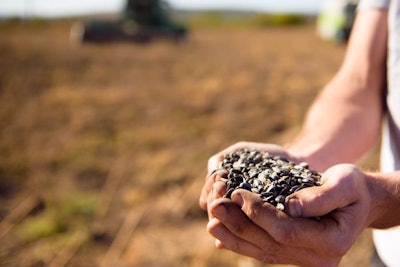
Feeding sunflower seed hulls to ruminants, and especially to semi-intensively fed feedlot beef cattle, is the best way to use this bulky material.
Sunflower seed production in the EU is increasing due to oil demand for biofuels. Sunflower seed crushing plants are usually small enterprises scattered across sunflower growing regions, often in the same neighborhood as animal farms. In the process of extracting oil from seeds (most often through solvent extraction), sunflower seed hulls are removed to enhance the efficiency of the extraction process.
When oil is separated, the resulting meal is back blended with varying amounts of seed hulls and sold as sunflower meal with a crude protein level ranging from about 25% (when all hulls are added back), to 35% (when half the hulls are added), to 45% (when none of the hulls are added). As it happens, it is possible to burn these hulls on-site to produce energy. It is estimated that no more than 50% of the hulls can be disposed in this way, hence the intermediate protein sunflower meal.
Sunflower seed hulls contain 50% crude fiber. The lignin content is almost half of that amount where, in terms of acid detergent fiber (ADF) and neutral detergent fiber (NDF), the figures are 60% and 75%, respectively. The non-lignin fiber profile is composed mainly of insoluble fibers. The levels of protein and residual oil are insignificant, being 7% and 5%, respectively. In ruminants, dry matter digestibility is very low, being around 18%, whereas the nutritive (energy value) for non-ruminants is nil, except in the case of rabbits, which fall somewhere between ruminants and non-ruminants. Thus, when hulls are added back into the meal, the fiber portion reduces the nutritive value of the product.
It is best to feed pigs and poultry only sunflower meal without hulls, or to the point the crude fiber specification in feed formulation is met. In the case of full-hull sunflower meal, the inclusion rate is rather small, and it is best to avoid using this ingredient at all. On the other hand, there is no restrictive factor other than a balanced ration when it comes to high-protein sunflower meal. Feeding hulls to non-ruminants, even to animals like gestating sows, is not recommended.
Feeding sunflower seed hulls to ruminants, and especially to semi-intensively fed feedlot beef cattle, is the best way to use this bulky material. For this purpose, it is important for the feedlot to be located very close to the crushing plant as hulls are bulky and cannot be transported economically to faraway destinations. Grinding hulls increases their cost but reduces transportation cost, plus, they can be included easier in total mixed rations for ruminants. If this practice were more widespread, then the higher-quality sunflower meal would be a better value-added proposition for crushers and animal growers. However, due to the small size of most crushers, it is rather difficult to store and market two distinct products. Plus, the lack of local know-how in small beef enterprises regarding using this ingredient is a further impediment to the establishment of this raw material as a ruminant fiber alternative.
Having said all that, a nutritionist with the right nutrient matrix and a good understanding of published literature – even without prior experience – can try feeding sunflower seed hulls to feedlot cattle. As a word of caution for everything new, it is best to start conservatively and run a test with a few animals before adopting any new technology.

